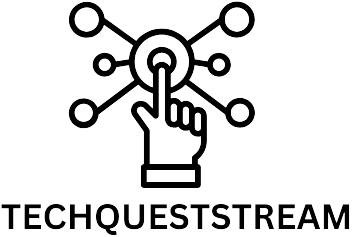In today’s fast-paced digital world, the demand for quick and efficient application development is skyrocketing. Enter low-code platforms like Appian, where coding is as easy as pie—if pie were made of drag-and-drop features and a sprinkle of creativity. Imagine building powerful applications without the need for a PhD in computer science. Sounds like magic, right? Well, it’s not; it’s just low-code development making life easier for everyone.
Table of Contents
ToggleOverview of Low-Code Application Development
Low-code application development emerges as a game changer in the tech landscape, addressing the need for swift application creation. Platforms like Appian empower users with minimal coding experience to build functional applications using intuitive drag-and-drop interfaces. A focus on visual development enables users to design sophisticated workflows without extensive coding knowledge.
With low-code development, teams can enhance productivity by rapidly prototyping applications and facilitating quick iterations based on user feedback. The simplified process leads to faster delivery times, enabling organizations to respond swiftly to changing market demands. Additionally, integrating features such as automation and analytics becomes straightforward with low-code tools, enhancing overall application functionality.
Companies increasingly recognize the strategic advantage of adopting low-code platforms. Significant savings in time and resources allow them to allocate focus on core business objectives rather than getting bogged down in traditional development challenges. Developers often find low-code environments more collaborative, facilitating input from both technical and non-technical team members throughout the development lifecycle.
The scalability of low-code platforms further contributes to their growing popularity. These solutions cater to businesses of all sizes, supporting various applications from simple internal tools to complex enterprise systems. By eliminating many traditional barriers associated with application development, low-code solutions play a pivotal role in digital transformation efforts across industries.
Introduction to Appian
Appian stands out in the low-code application development landscape by streamlining the creation of applications. Its platform simplifies the development process, making it accessible to users with varying levels of technical expertise.
Key Features of Appian
Appian boasts intuitive drag-and-drop functionality, which allows users to design apps without writing extensive code. Visual workflow builders provide a clear overview of processes, ensuring users can easily map out their applications’ functionalities. Integration with various data sources enhances flexibility, allowing seamless connections to existing systems. Real-time collaboration tools further improve teamwork, enabling developers and business users to work in unison throughout the development phase. Appian also includes built-in automation features, contributing to efficiency by minimizing manual tasks.
Benefits of Using Appian for Low-Code Development
Using Appian for low-code development results in considerable time savings during the application creation process. Rapid prototyping capabilities allow teams to gather feedback quickly, leading to timely adjustments and improved outcomes. Enhanced adaptability supports organizations in responding to market demands effectively. With its user-friendly interface, non-technical users can take part in the development process, fostering a collaborative environment. Overall, Appian empowers organizations to innovate swiftly while reducing reliance on extensive coding skills.
Getting Started with Appian Online
Getting started with Appian Online makes application development straightforward. Users can create an account and dive into low-code development with ease.
Setting Up Your Account
Creating an account on Appian takes just a few steps. Visit the Appian website and look for the sign-up option. Enter required information such as an email address and password. After submission, verify the email to activate the account. Once activated, users can access the Appian platform, exploring its low-code capabilities without barriers.
Navigating the Appian Interface
Navigating the Appian interface is intuitive and user-friendly. The main dashboard features visually organized tools for application design. Users can quickly locate drag-and-drop components that simplify workflow creation. Each section of the interface has clear labels, guiding users through their development journey. With real-time collaboration tools visible, teams can engage actively during the development process, enhancing their project outcomes.
Building Your First Low-Code Application
Creating a low-code application with Appian involves a straightforward approach. Users begin by familiarizing themselves with the app interface, which efficiently organizes tools needed for development.
Step-by-Step Development Process
The development journey starts with defining the application’s primary purpose. Users then proceed to utilize the drag-and-drop features, easily adding components such as forms and workflows. Visual workflow builders facilitate seamless integration of various data sources, enhancing functionality. Repeatedly, users can refine their workflows based on real-time feedback from team members. Collaborating during this stage allows for immediate adjustments, ensuring the application aligns with business needs.
Testing and Deployment
Testing becomes crucial once the development phase ends. Users conduct thorough tests to identify issues before deployment. Feedback loops with stakeholders play a key role in this phase, helping to make necessary adjustments. Finalizing the application requires a smooth handoff to the deployment stage. Appian simplifies this process, enabling quick deployment to production environments. Post-deployment, the app can adapt to user interactions, continually improving based on real-world usage and feedback.
Embracing low-code application development with Appian opens doors to innovation and efficiency. Users can harness the platform’s intuitive features to create robust applications without needing extensive coding expertise. This accessibility not only accelerates development but also fosters collaboration among diverse teams.
Organizations can significantly reduce time to market while adapting quickly to changing demands. By leveraging Appian’s capabilities, businesses can focus on their core objectives and drive digital transformation effectively. The future of application development is here, and with Appian, anyone can be part of it.




